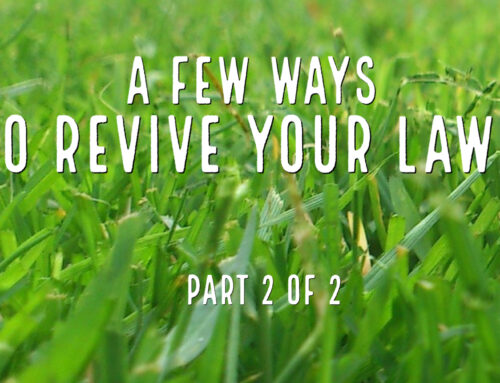Keeping your lawn healthy during the summer heat is crucial to ensuring a lush and green yard all season long. As the temperatures rise, your lawn may face various challenges that can impact its health and appearance. From heat stress to insect damage, it’s important to take proactive steps to protect your lawn from the summer elements. In this blog post, we will discuss strategies to beat the burn and keep your lawn looking its best throughout the summer.
Understanding the Impact of Heat on Your Lawn
When temperatures soar, your lawn becomes vulnerable to a phenomenon known as heat stress. This condition arises when grass is subjected to prolonged periods of high temperatures, particularly when these are combined with inadequate moisture levels. The physiology of your grass plays a significant role in its response to heat. For instance, each grass type has a temperature threshold beyond which photosynthesis slows down or stops, leading to a reduction in growth and vigor. As the grass struggles to cope with the heat, its color may fade, turning from a vibrant green to a dull brown, an indication that the blades are drying out and potentially dying.
Heat stress also affects the soil, causing it to dry out more quickly. This exacerbates the problem by making it difficult for the root system to absorb water and nutrients efficiently. Moreover, the stress on the grass can make it more susceptible to other issues, such as disease and insect infestations, which can further compromise the health of your lawn. Recognizing these signs early is crucial for taking corrective measures. Actions such as adjusting your watering schedule or seeking more resilient grass varieties can mitigate the impact of high temperatures, helping to preserve the health and appearance of your lawn during the challenging summer months.
Optimal Watering Techniques for Summer Lawn Care
Watering your lawn effectively during the summer is more than just turning on the sprinklers; it requires strategy. To safeguard your grass against the perils of heat stress, adopt a method of deep, infrequent watering. This approach encourages the roots to grow deeper into the soil, searching for moisture, which in turn builds a more drought-resistant lawn. Aim to water early in the morning, as this timing helps minimize evaporation and allows water to soak more deeply into the soil where it’s needed most.
It’s crucial to adjust your watering schedule based on the weather conditions. During periods of extreme heat or drought, your lawn may require additional water to maintain its vitality. However, be mindful not to overwater, as this can lead to other problems, including disease and fungus growth.
Utilize a rain gauge or a simple container to measure the amount of water your lawn receives from rainfall and supplemental watering. This can help ensure that your lawn is getting approximately 1 to 1.5 inches of water per week, which is often recommended for most grass types during the summer months. By mastering these watering techniques, you can promote a thriving, stress-resistant lawn throughout the hottest days of the year.
The Importance of Mowing Practices in Heat Stress Reduction
Adopting the right mowing practices is essential in combating heat stress in your lawn. One of the key strategies is to maintain an optimal grass length. Grass that is cut too short is more susceptible to heat damage, as shorter blades have a reduced ability to perform photosynthesis, which is critical for growth and health. Therefore, it’s recommended to leave the grass slightly longer during the hotter months. This not only shields the soil from direct sunlight, reducing moisture evaporation but also promotes deeper root growth, enabling the lawn to better withstand periods of drought and heat.
Another critical aspect is the frequency and timing of mowing. It’s advisable to mow the lawn less frequently during times of extreme heat, as each cut can put additional stress on the grass. When you do mow, doing so during the cooler parts of the day, either in the early morning or late afternoon, can prevent the grass from going into shock. Additionally, ensuring that your mower blades are sharp is crucial. Dull blades can tear the grass rather than cutting it cleanly, which can lead to stress and increase the risk of disease.
Incorporating these mowing practices into your lawn care routine can significantly help in reducing heat stress, thereby contributing to a healthier, more resilient lawn during the challenging summer months.
Identifying and Controlling Pests that Thrive in the Heat
During the sweltering summer months, your lawn can become a prime target for a variety of pests. These unwelcome guests, including grubs, chinch bugs, and armyworms, can cause significant damage, leaving unsightly, brown patches on your once lush lawn. To combat these invaders, regular monitoring is key. Look for irregularities such as thinning grass, discoloration, or visible insect activity. Early detection is crucial for effective control.
Once you’ve identified the culprits, it’s time to take action. For a natural approach, consider introducing beneficial nematodes or predatory insects that can help reduce pest populations without harming your lawn. In cases of severe infestation, targeted chemical treatments may be necessary. Opt for products that are specifically designed to address the pests you are dealing with, and always follow application instructions carefully to avoid harming your grass.
Remember, a healthy lawn is your first line of defense against pest invasions. Regular care, including proper watering, mowing, and fertilization, can strengthen your lawn, making it less inviting to pests. Vigilance and prompt action against pests will help ensure that your lawn remains a vibrant oasis, even in the heat of summer.
Fertilization: Feeding Your Lawn During the Summer
Summer brings not only warmth but also the challenge of maintaining a lush lawn. Fertilization during this season is pivotal. Select a fertilizer tailored for summer use, ideally one that’s slow-releasing to nourish your grass steadily without overwhelming it. This gradual nourishment is crucial during times of high temperatures, as it prevents the quick release of nutrients that could harm rather than help your grass. Pay close attention to the manufacturer’s instructions regarding application rates and timing to avoid nutrient burn, which can exacerbate stress on your lawn. Additionally, consider the nutrient needs specific to your lawn type and the current soil conditions. Sometimes, a soil test may be beneficial to determine these needs accurately. Fertilizing with precision ensures that your lawn not only survives the summer heat but thrives, displaying resilience and vigorous growth despite the challenging conditions. Remember, the goal is to support your lawn’s health through targeted nutrition, setting the stage for continued vitality and greenness throughout the season.
The Role of Aeration and Overseeding in Maintaining Lawn Vigor
Aeration is a crucial process for combating soil compaction, a common issue during the high-traffic summer months. By perforating the soil with small holes, aeration allows oxygen, water, and essential nutrients to penetrate deeper into the ground, reaching the roots where they are most needed. This improved circulation fosters a stronger, more resilient root system, vital for enduring the summer’s harsh conditions. Concurrently, overseeding plays a complementary role by introducing new grass seeds to thin or bare areas of the lawn. This practice not only enhances the visual appeal of your yard but also increases its density, making it more difficult for weeds to establish and spread. The added grass variety can introduce more drought-resistant strains, further bolstering the lawn’s ability to cope with the season’s challenges. Together, aeration and overseeding are synergistic practices that rejuvenate and invigorate the lawn, ensuring its vigor and beauty are maintained throughout the summer’s taxing conditions. Implementing these techniques can significantly contribute to a healthier, more lush lawn that is better equipped to handle the extremes of summer weather.
Implementing Shade Solutions to Protect Your Lawn
Creating shaded areas over your lawn is an effective way to shield it from the harsh realities of summer’s relentless sun. By thoughtfully incorporating trees or erecting man-made structures like pergolas or shade sails, you not only enrich your landscape’s aesthetic appeal but also provide crucial protection against the scorching heat. Strategic placement of these elements can make a significant difference in reducing the temperature of the underlying soil and grass, ultimately mitigating heat stress and minimizing moisture loss.
Consider the mature size of trees when planting for shade, ensuring they offer ample coverage without overwhelming the space or inhibiting grass growth due to excessive shade. Similarly, when opting for artificial shade solutions, select materials that allow for some light penetration, promoting photosynthesis while still providing relief from intense sunlight.
Additionally, integrating these shade solutions offers a dual benefit. Not only do they help in conserving water by reducing evaporation rates, but they also create a cooler, more enjoyable outdoor space for leisure activities during the heat of summer. By balancing sun and shade, you can foster a lawn that is both resilient to summer stressors and inviting for backyard gatherings.
In summary, the judicious use of shade as part of your lawn care regimen is more than just a means of protection; it’s a strategic approach to enhancing the health, beauty, and functionality of your outdoor environment, ensuring it thrives even under the summer sun’s demanding conditions.







